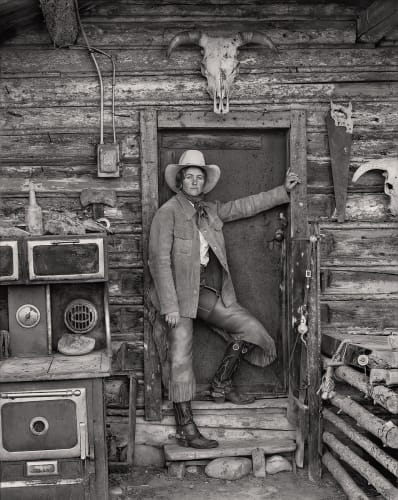
Born in St. Louis in 1937, Jay Dusard was raised on a southern Illinois farm. As an architecture student at the University of Florida, a travel scholarship to study American architecture, coast to coast, was his introduction to the American West.
Dusard spent two years in the peacetime army, using his off-duty hours to "cowboy" near Fort Hood, Texas. In 1963, his cow punching led him to an Arizona-Sonora border ranch, where he found his best deal ever: "open country, independence, seven bucks a day, bunk and board."
In 1965, while living in Tucson, Arizona, and working in architecture and cartography, Dusard started photographing. A year later in Flagstaff he was working in publishing and regularly aiming his large-format cameras at the landscape. He met photographer Frederick Sommer, who became his mentor and paved the way for him to teach photography for seven years at Prescott College.
A 1981, Dusard was awarded a Guggenheim Fellowship which allowed him to pursue the working cowboy, buckaroo, and vaquero as a photographic subject. The resulting body of work was published in The North American Cowboy: A Portrait (1983). His second book, Open Country, was awarded third place in the 1994 Photographic Book of the Year competition. In 2005, he collaborated with writer Thomas McGuane on Horses. A documentary by Michael Markee, Jay Dusard: Keeping the West Western, premiered at the Sedona International Film Festival in 2006.
Dusard’s work has been exhibited at several public institutions among them, the Phoenix Art Museum, Glenbow Museum (Calgary), Colorado Springs Fine Arts Center, Consejo Mexicano de Fotografia (Mexico City), Art Museum of South Texas, and the International Photography Hall of Fame (Oklahoma City). His work is included in the permanent collections of the Center for Creative Photography at the University of Arizona, Tucson, the Tucson Museum of Art, the Phoenix Museum of Art, the Museum of South Texas, the Los Angeles County Museum of Art (LACMA), the Booth Museum of Western Art and the Charles M. Russell Museum, as well as several private and corporate collections.
